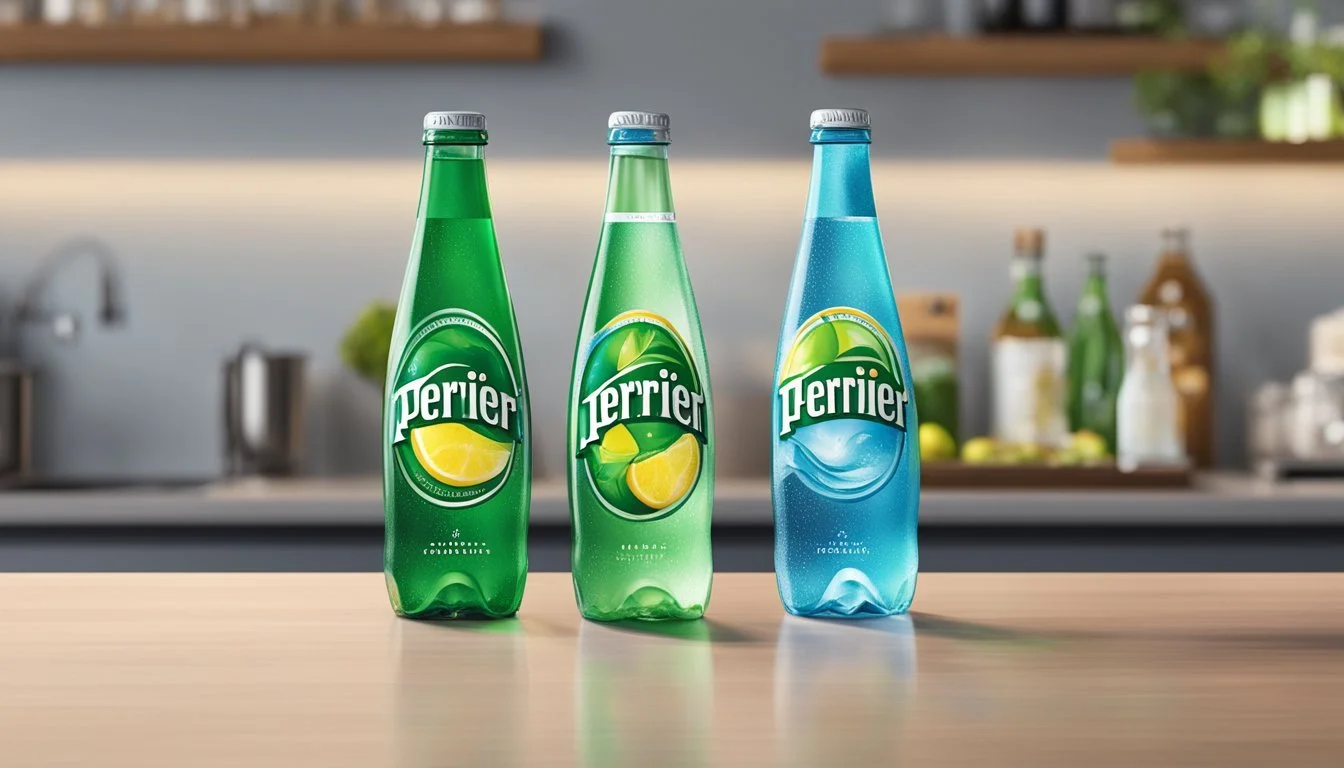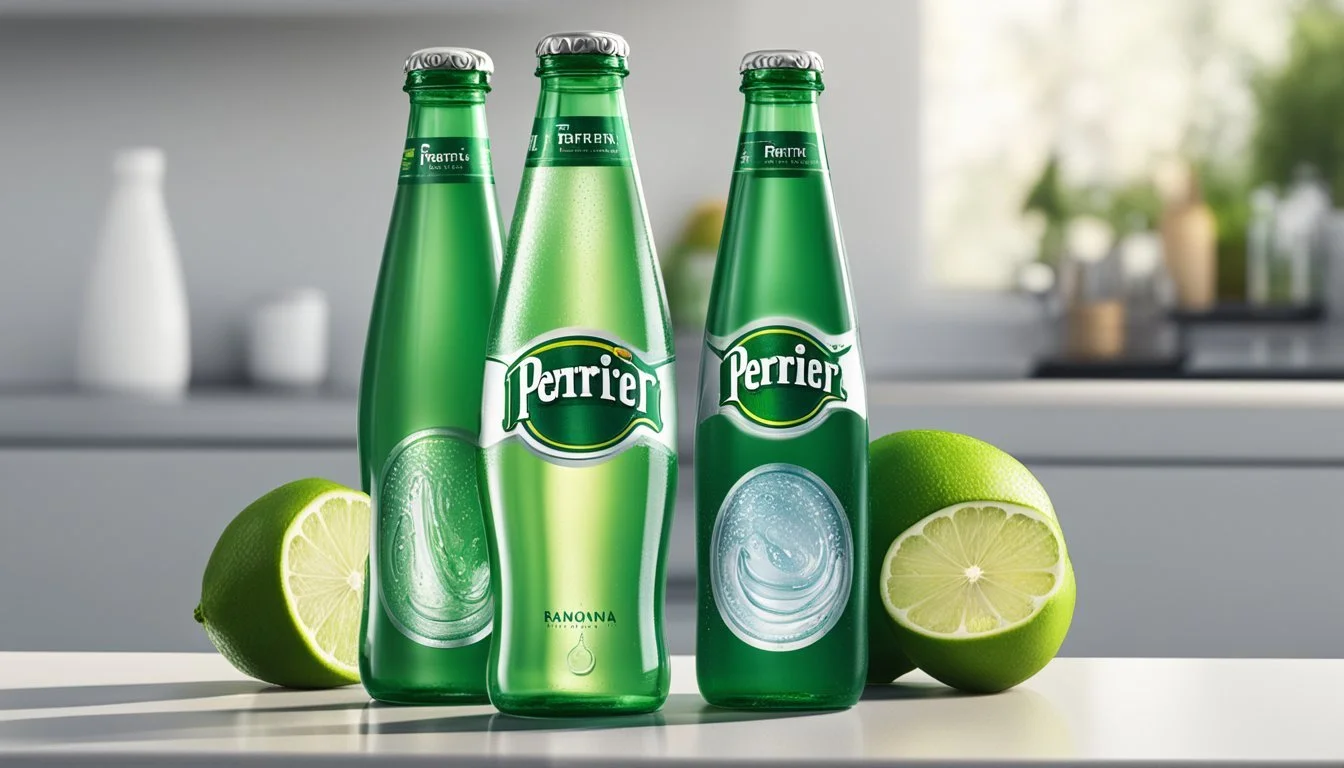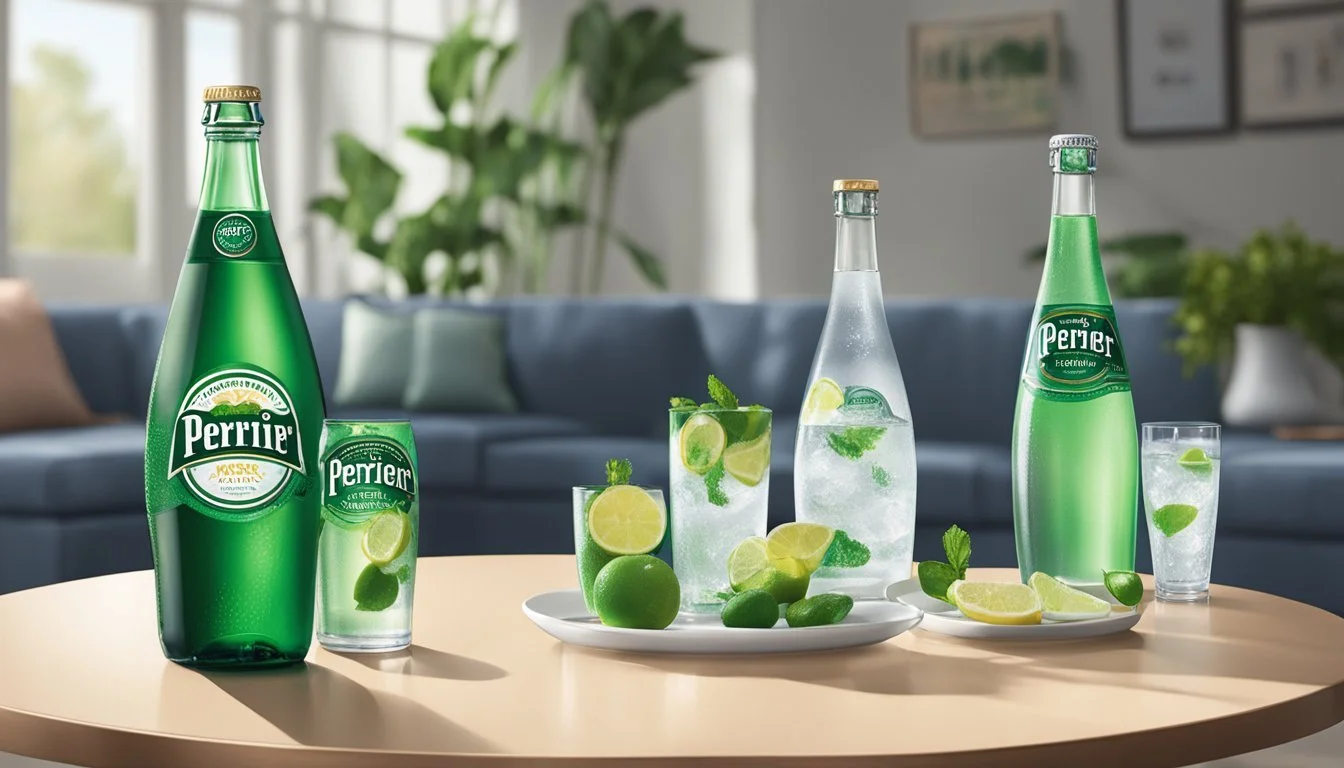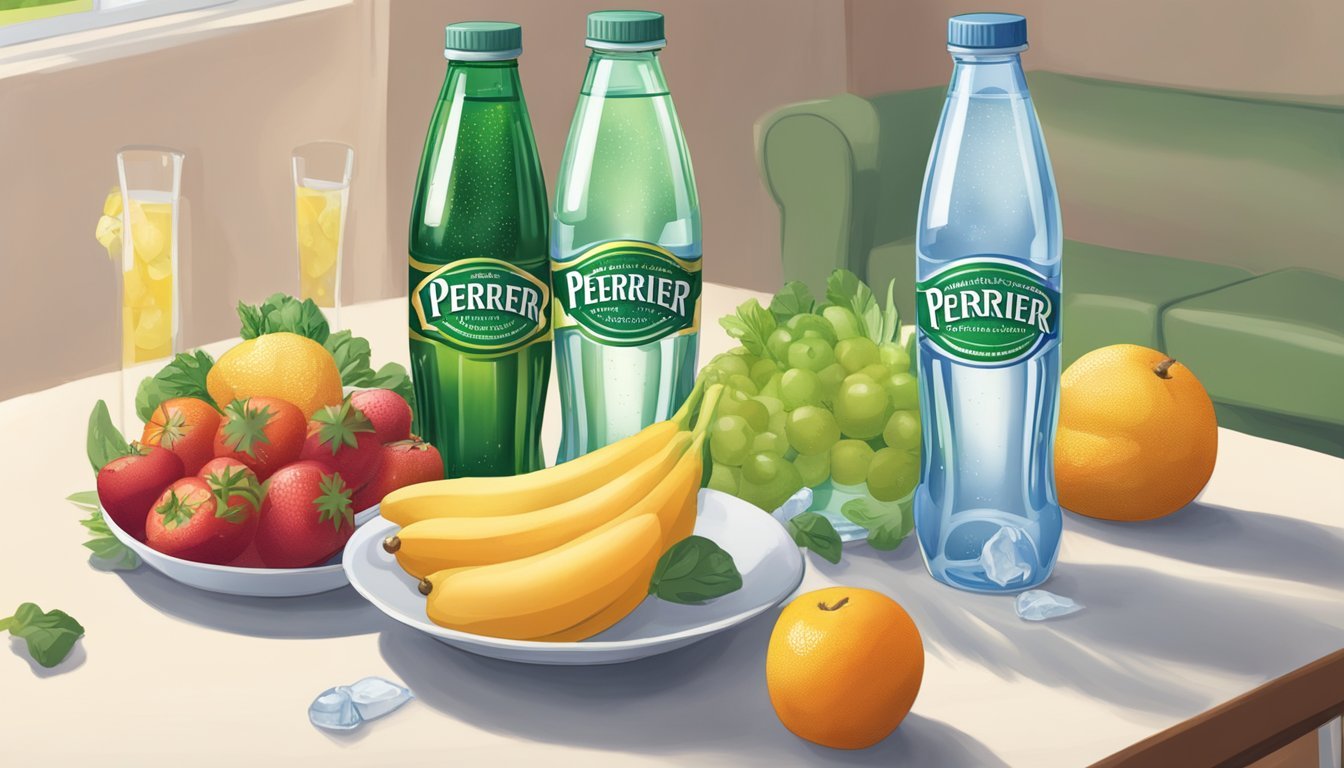Perrier vs. Ramona
Which Bottled Water is Better? A Comprehensive Comparison
When it comes to choosing between Perrier and Ramona, the battle often boils down to personal preference and specific needs. Perrier, a staple in the sparkling water market, is celebrated for its crisp, mineral-rich taste sourced from natural springs in France. Its effervescence and premium branding have made it a favorite among sparkling water enthusiasts.
On the other hand, Ramona offers a unique twist by blending natural sparkling water with organic wines. This innovative combination provides a refreshing, lightly alcoholic beverage that stands out in the crowded market of non-alcoholic sparkling waters. Ramona caters to those looking for a more adventurous alternative to traditional sparkling water.
For those who prefer a classic, mineral-rich sparkling water, Perrier is the better choice. However, if you are inclined toward a more playful and alcohol-infused option, then Ramona’s creative blends might be more appealing. Each brand brings something distinct to the table, making it worthwhile to explore both depending on your palate and occasion.
Understanding Bottled Water
Bottled water comes in various types, each offering unique qualities. Regulations ensure its safety and quality.
Types of Bottled Water
There are different types of bottled water available:
Spring Water: Sourced from natural springs, retaining natural minerals. Example: Perrier.
Mineral Water: Contains essential minerals and is sourced from mineral springs. Example: Evian.
Purified Water: Undergoes processes like reverse osmosis to remove impurities. Example: Smartwater.
Tap Water: Treated and filtered municipal water, less commonly bottled. Example: Some local brands.
Each type has distinct characteristics in terms of minerals, pH levels, and sourcing methods. For instance, natural spring and mineral waters often boast higher mineral content compared to purified or tap water.
Bottled Water Regulations
Bottled water regulations ensure safety and quality standards are met.
FDA Regulations: The U.S. Food and Drug Administration (FDA) oversees bottled water, enforcing stringent labeling and quality standards similar to municipal tap water.
EPA Guidelines: Source water must comply with Environmental Protection Agency (EPA) regulations before bottling.
Additional measures include regular testing, sanitization, and filtration processes. International brands must comply with local regulations where they are sold. These protocols ensure the water is free from harmful contaminants and safe for consumption.
Brand Profiles
Perrier and Ramona are well-known bottled water brands, each with distinct origins, tastes, and features. Below are detailed profiles of these brands, highlighting their unique aspects and what sets them apart.
Perrier Overview
Perrier, a globally recognized brand, originates from the South of France. Specifically, its water is sourced from a spring in the town of Vergèze. Known for its iconic green bottle and sparkling quality, Perrier is synonymous with luxury and sophistication.
The brand offers natural sparkling mineral water, free from artificial ingredients. The carbonation is natural, a result of the geological processes occurring in the region. Perrier's water is lightly mineralized, giving it a clean, crisp taste that many consumers prefer. It is often used as a mixer in cocktails due to its effervescence and light mineral flavor.
Ramona Overview
Ramona, on the other hand, is relatively newer to the market and focuses on a different niche. Originating from the Italian Alps, Ramona emphasizes sustainability and a commitment to natural ingredients. This brand offers both still and sparkling options.
Ramona's bottled water is sourced from pristine mountain springs, ensuring a fresh and pure taste. The packaging is eco-friendly, reflecting the brand's dedication to environmental responsibility. Consumers appreciate Ramona for its balanced mineral composition, which imparts a subtle, harmonious flavor. It also strives to maintain minimal processing, preserving the water's natural qualities.
Nutritional Content Comparison
Perrier and Ramona differ significantly in their nutritional profiles, particularly regarding mineral content and pH levels. This section examines these critical aspects to help readers understand the distinctions.
Mineral Content
Minerals play an essential role in our diet, significantly impacting health. Perrier provides several naturally occurring minerals. It contains calcium, magnesium, and potassium. For every liter, Perrier includes around 10mg of sodium.
On the other hand, Ramona focuses on mineral balancing, showing lower levels of calcium and magnesium but relatively higher potassium content. Comparatively, the sodium levels in Ramona are also lower, making it suitable for low-sodium diets. Specific content varies by source and treatment, but generally:
Mineral Perrier Ramona Sodium ~10mg <10mg Calcium Present Lower Magnesium Present Lower Potassium Present Higher
pH Levels Analysis
The pH level of the water can influence its taste and impact on dental health. Perrier has a pH level around 5.5, which is slightly acidic. That may raise concerns for those sensitive to acidic drinks, potentially impacting tooth enamel over time.
Ramona features a more neutral pH, typically closer to 7. This neutrality can be gentler on the stomach and teeth, making it an optimal choice for frequent consumption. Comparing pH levels:
Perrier: Approximately 5.5
Ramona: Around 7
Understanding these pH levels helps in choosing the right water for dietary needs and preferences. Differences in acidity can also affect the pairing with food and overall consumption experience.
Taste and Texture
When comparing Perrier and Ramona, a few key factors dominate: the presence of carbonation and distinct taste profiles. Both brands offer unique characteristics that appeal to different palate preferences.
The Role of Carbonation
Perrier is renowned for its strong carbonation, with abundant small, lively bubbles that create a refreshing mouthfeel. The carbon dioxide content enhances the overall drinking experience, making it feel crisper.
In contrast, Ramona's carbonation is subtler and smoother. The bubbles in Ramona are less aggressive, resulting in a gentler texture. This makes it a preferred choice for those who find strong carbonation too intense but still seek the refreshing qualities of sparkling water.
Taste Profile Differences
Perrier offers a mineral-rich taste, reflecting its origins from the French Alps. The natural minerals contribute to a slight briny flavor, which some consumers find invigorating. The taste can be described as crisp and clean with a hint of effervescence.
Ramona, on the other hand, delivers a milder, more neutral taste. It lacks the prominent mineral flavor found in Perrier, making it more akin to drinking still water with a delicate fizz. This makes it versatile for pairing with various foods or as a standalone refreshment without an overpowering taste sensation.
Both Perrier and Ramona cater to different taste preferences, offering consumers a choice based on their texture and flavor characteristics.
Environmental and Economic Factors
When comparing Perrier and Ramona bottled waters, it's crucial to consider their environmental and economic implications. The two brands differ significantly in terms of source sustainability, packaging practices, and cost.
Source and Sustainability
Perrier sources its water from a natural spring in Vergèze, France. The spring is carefully managed to ensure long-term sustainability. Perrier invests in preserving the local ecosystem and employs methods that keep the water naturally carbonated. This approach minimizes the impact on the environment while maintaining water quality.
Ramona, known for its unique blend of natural ingredients, sources its water responsibly. Though not from a single spring, Ramona emphasizes sustainable sourcing practices. They focus on minimal disruption to natural water sources and ensure a supply chain that aligns with environmental standards.
Packaging and Recycling
Perrier primarily uses glass bottles, which are infinitely recyclable. They have started incorporating recycled glass into their manufacturing process, reducing the demand for raw materials. Additionally, Perrier has initiatives to encourage consumers to recycle, helping decrease plastic waste.
Ramona, on the other hand, offers water in glass bottles and boxed water options. The use of boxed water is a nod to reducing plastic pollution. Boxed water packaging is often made from renewable resources and is recyclable, although it may be less durable than glass.
Both brands are committed to reducing their environmental footprint through innovative packaging and recycling programs. Their respective strategies aim to lower the environmental impact of single-use containers.
Cost Considerations
Perrier is generally marketed as a premium product, reflected in its price point. The use of natural carbonation and glass packaging contributes to its higher cost. Consumers often see it as a luxury item, suitable for special occasions and fine dining.
Ramona tends to be more competitively priced, despite its sustainable sourcing and packaging. By offering boxed water, Ramona provides an alternative that is both affordable and environmentally conscious. The lower price can attract a broader audience, making sustainability more accessible.
Both brands balance quality and sustainability with cost, yet their differing approaches cater to distinct market segments.
Consumer Insights and Preferences
Understanding what consumers think about Perrier and Ramona helps highlight their market positions and perceived value. Examining popularity trends and customer reviews reveals crucial insights into hydration quality, taste, and overall satisfaction.
Market Popularity Trends
Perrier, a well-established brand, has maintained a strong market presence for decades. It is recognized for its crisp, bubbly mineral water sourced from France. The brand's ongoing marketing strategies and collaborations with influencers keep it relevant across different demographics.
Ramona, on the other hand, is newer but rapidly gaining traction. It appeals to a younger crowd with its trendy packaging and emphasis on natural ingredients. Social media plays a significant role in Ramona's popularity, with numerous influencers promoting it as a stylish, health-conscious choice.
Customer Reviews and Feedback
Customer reviews for Perrier frequently highlight its refreshing taste and quality of bubbles. Many appreciate its versatility, suitable for both casual drinking and as a mixer in cocktails. Water sommeliers and taste tests often rate Perrier highly for its consistent texture and clean flavor.
Ramona receives praise for its unique flavors and modern approach to bottled water. Customers often mention its natural taste and appealing look. While some reviews note the relatively higher price, they also acknowledge the brand's commitment to quality and organic ingredients.
Both brands enjoy a dedicated consumer base, with specific strengths appealing to different market segments. Perrier is often chosen for its classic pedigree and reliable taste, while Ramona attracts those seeking modern, stylish hydration options.
Health Implications
Perrier and Ramona waters each have unique health considerations. These include their hydration capabilities, electrolyte content, and safety measures related to potential contaminants.
Hydration and Electrolytes
Perrier is a sparkling mineral water that contains some naturally occurring electrolytes like calcium, magnesium, and sodium. These minerals can aid hydration by replenishing essential electrolytes lost through sweat. Perrier is particularly noted for its low sodium content, usually less than 10mg per liter.
Ramona water, on the other hand, is typically still water and often has a different mineral content depending on the source. It may or may not contain electrolytes such as magnesium or potassium. The hydration benefits are similar, but the lack of carbonation might make it easier for some individuals to drink in large quantities, ensuring better hydration over the day.
Safety and Contaminants
Safety is critical when evaluating bottled water. Perrier undergoes stringent safety checks to ensure it is free from contaminants such as lead and bacteria. The water is sourced from a natural spring, which means it is less likely to be contaminated by industrial pollutants.
In contrast, Ramona water's safety also meets the Environmental Protection Agency (EPA) standards but may vary based on its source. For instance, municipal sources might include additional purification steps to remove chlorine and other potential contaminants. Both types are generally regarded as safe, with regular testing to comply with health standards. Consumers should always check the latest reports from the manufacturer for any specific concerns related to their source of water.
More About Perrier
Icelandic Glacial vs Perrier: Which Bottled Water is Better?
Mountain Valley Spring Water vs Perrier: Which Bottled Water is Better?
Perrier vs Kirkland Signature: Which Bottled Water is Better?
Perrier vs Richard's Rainwater: Which Bottled Water is Better?
Perrier vs Whole Foods Italian Still Mineral water: Which Bottled Water is Better?








